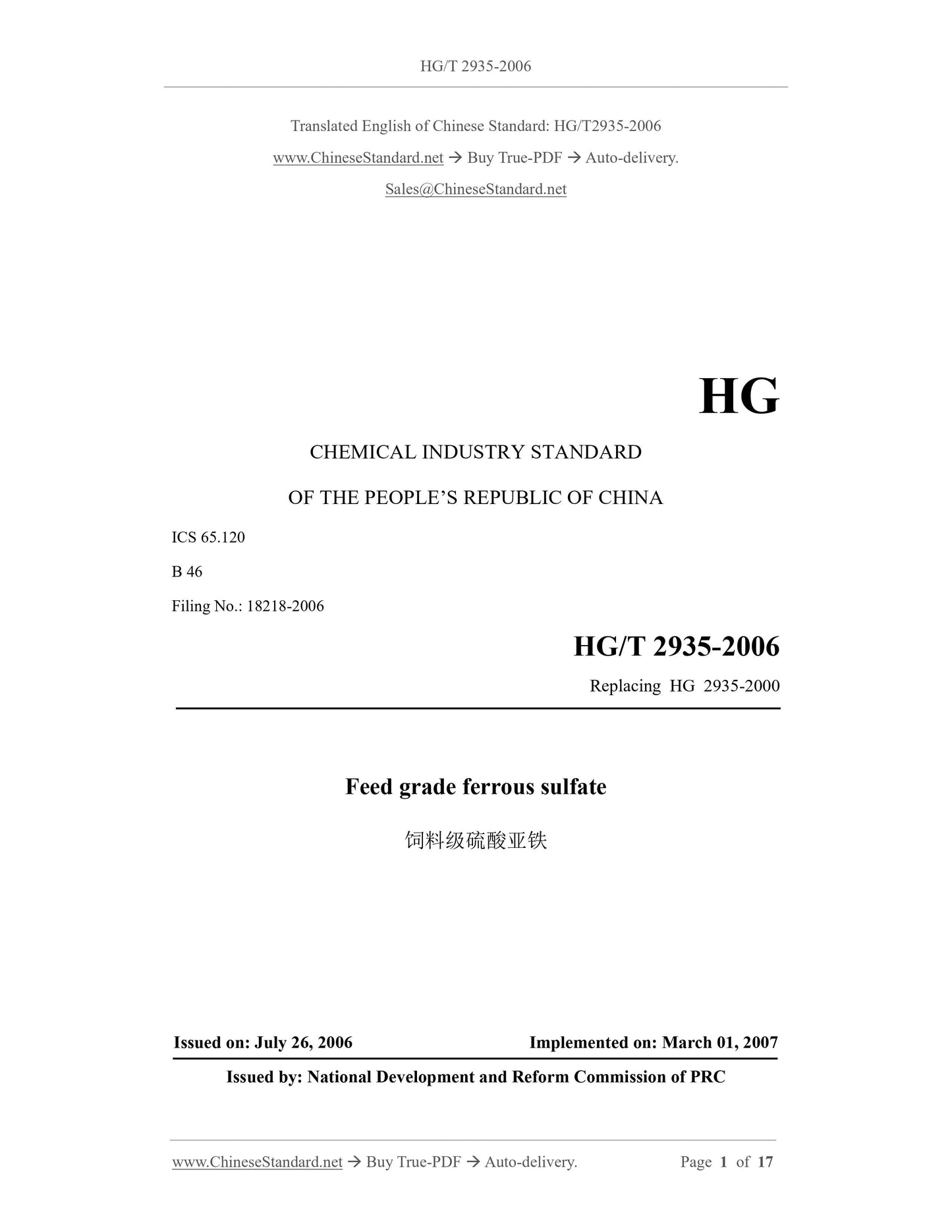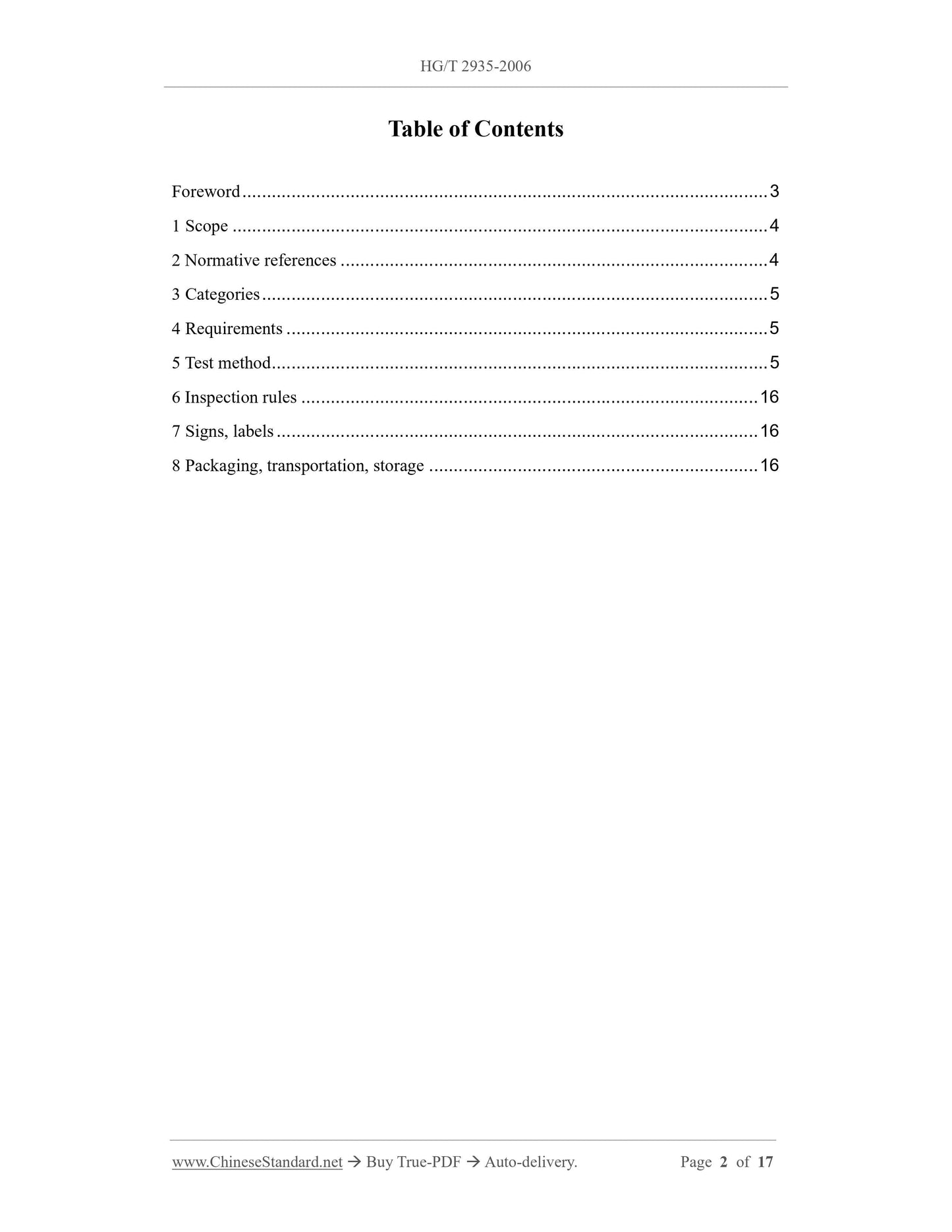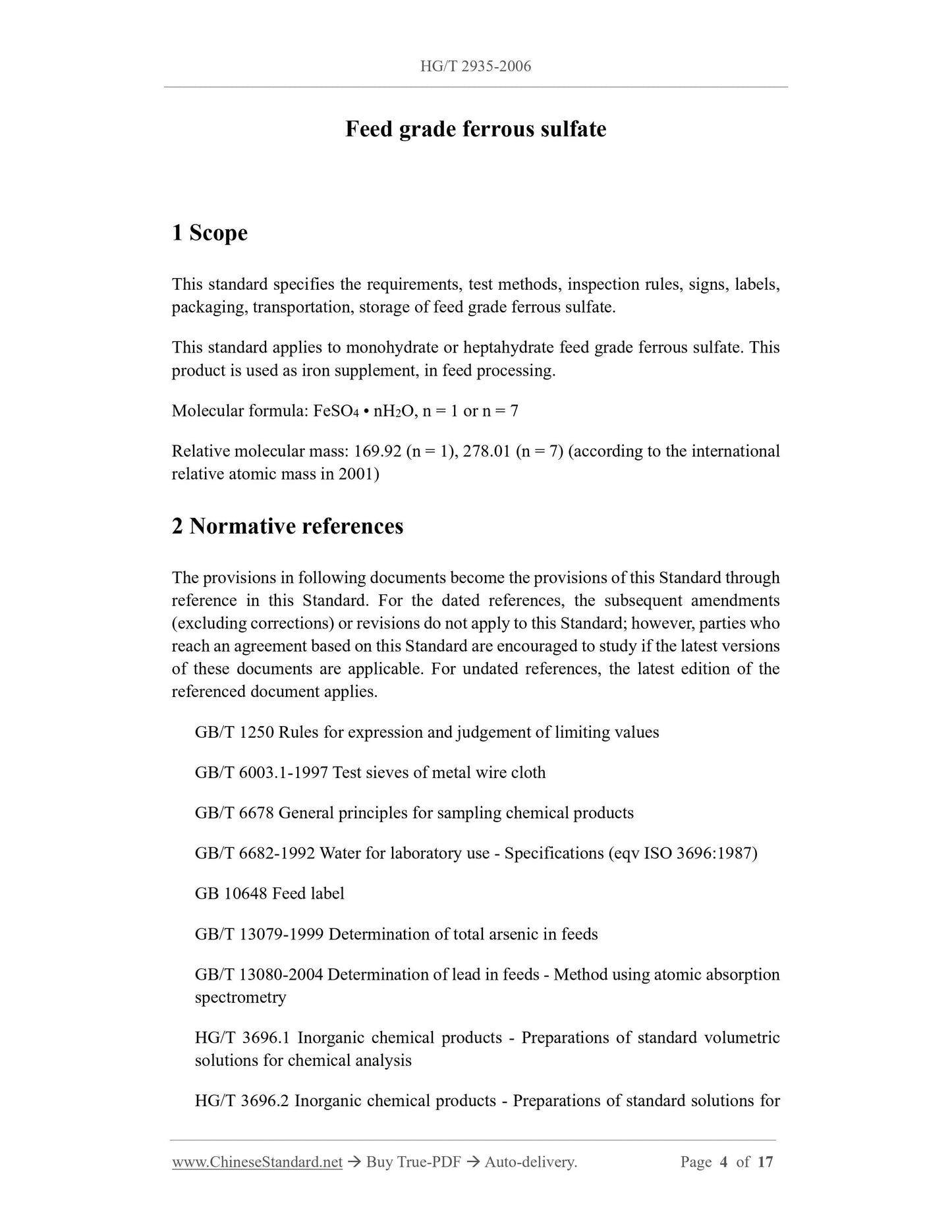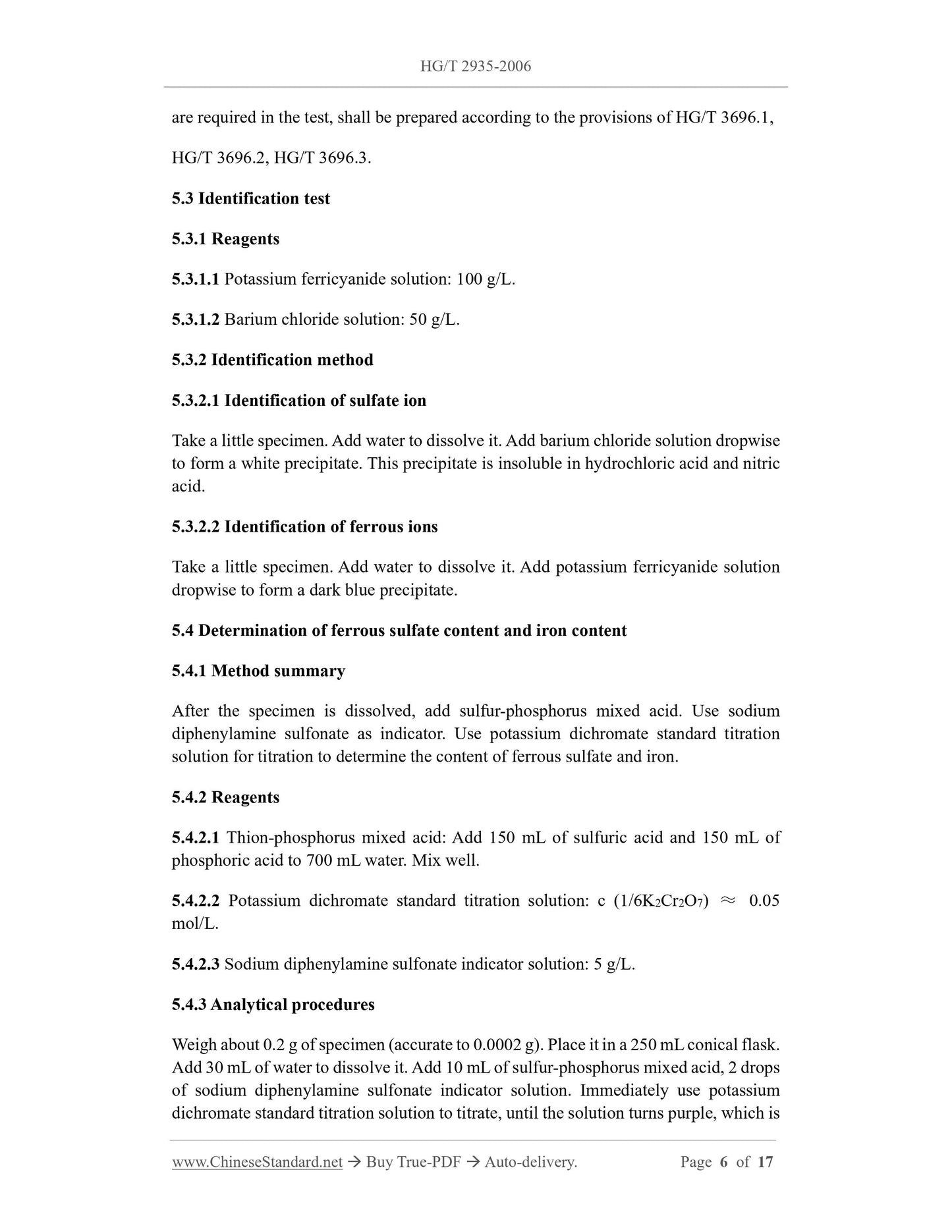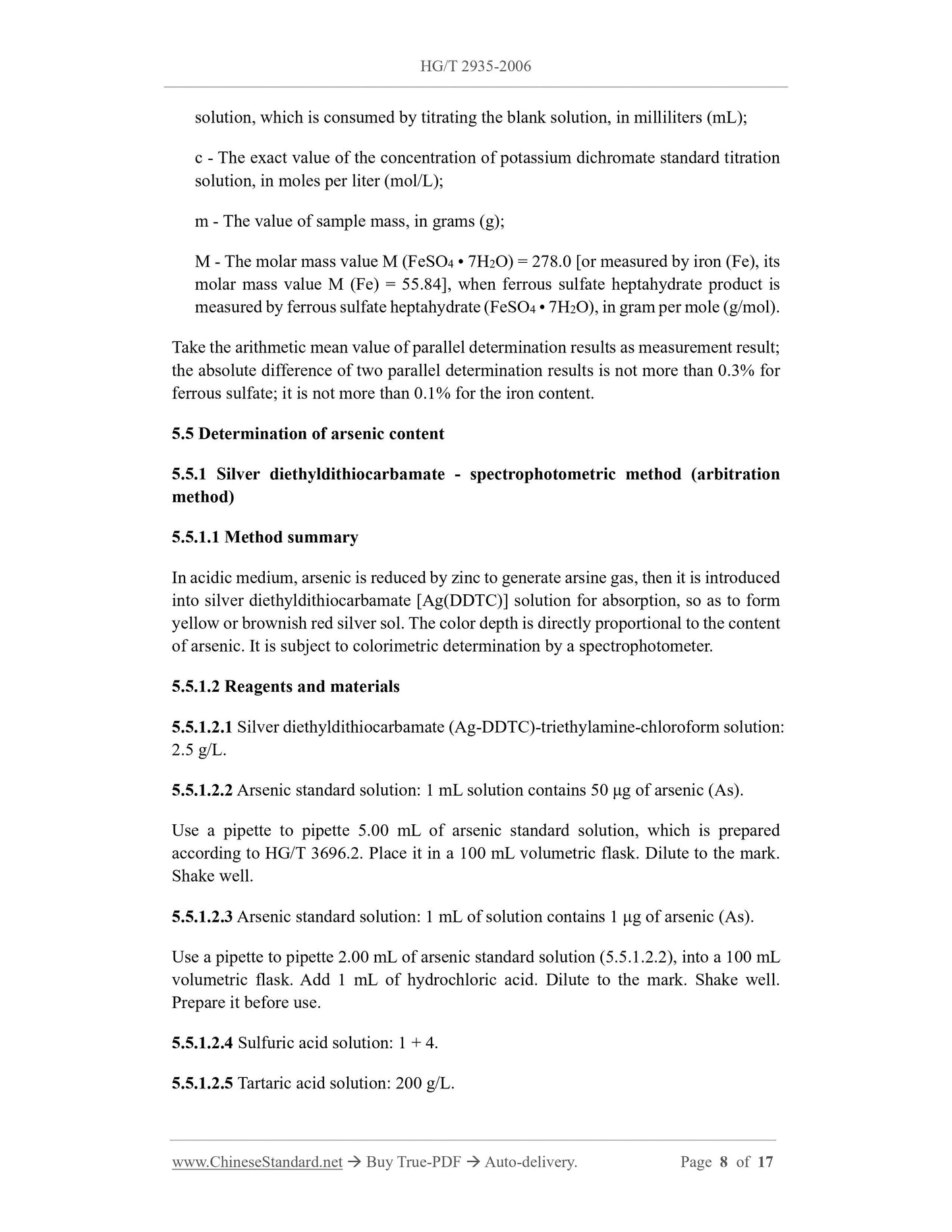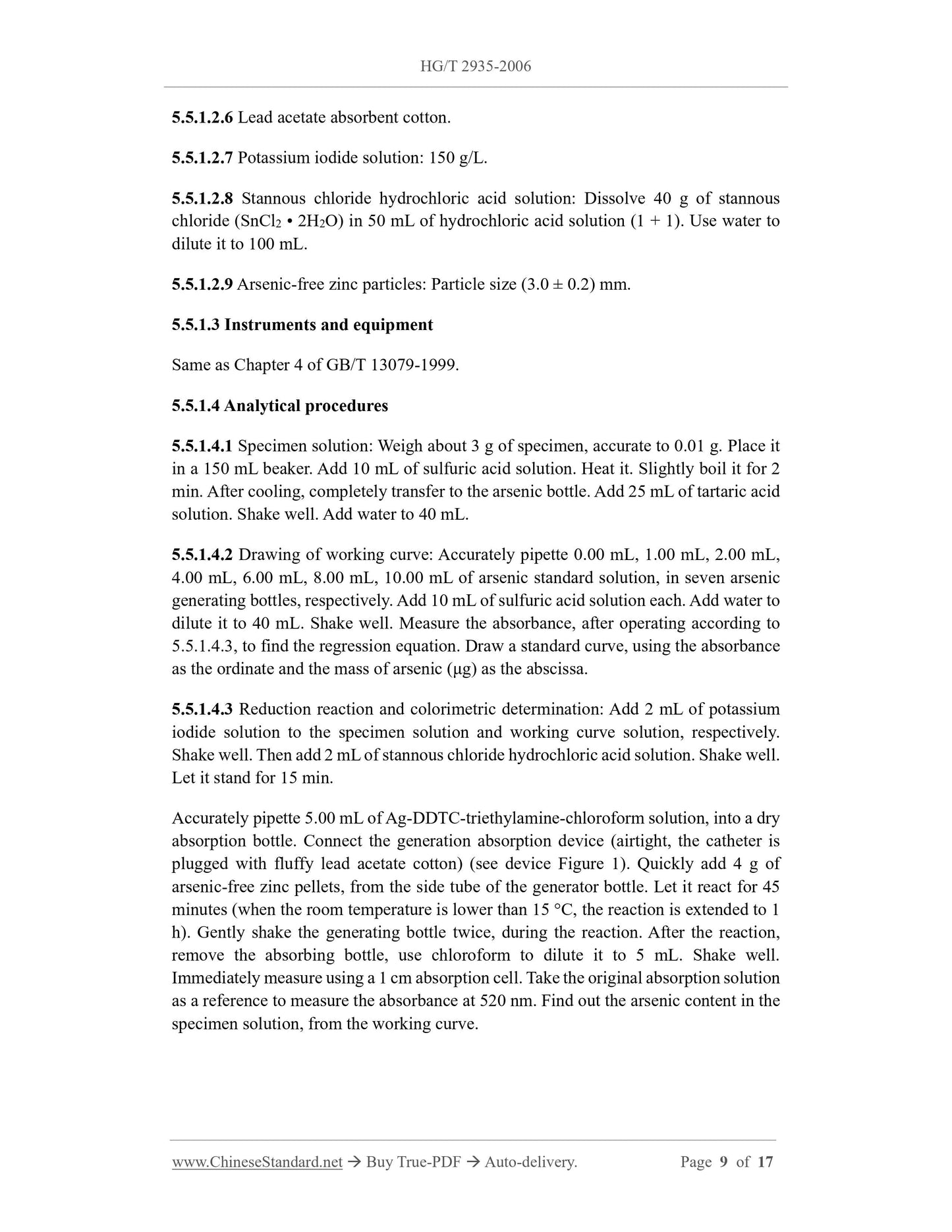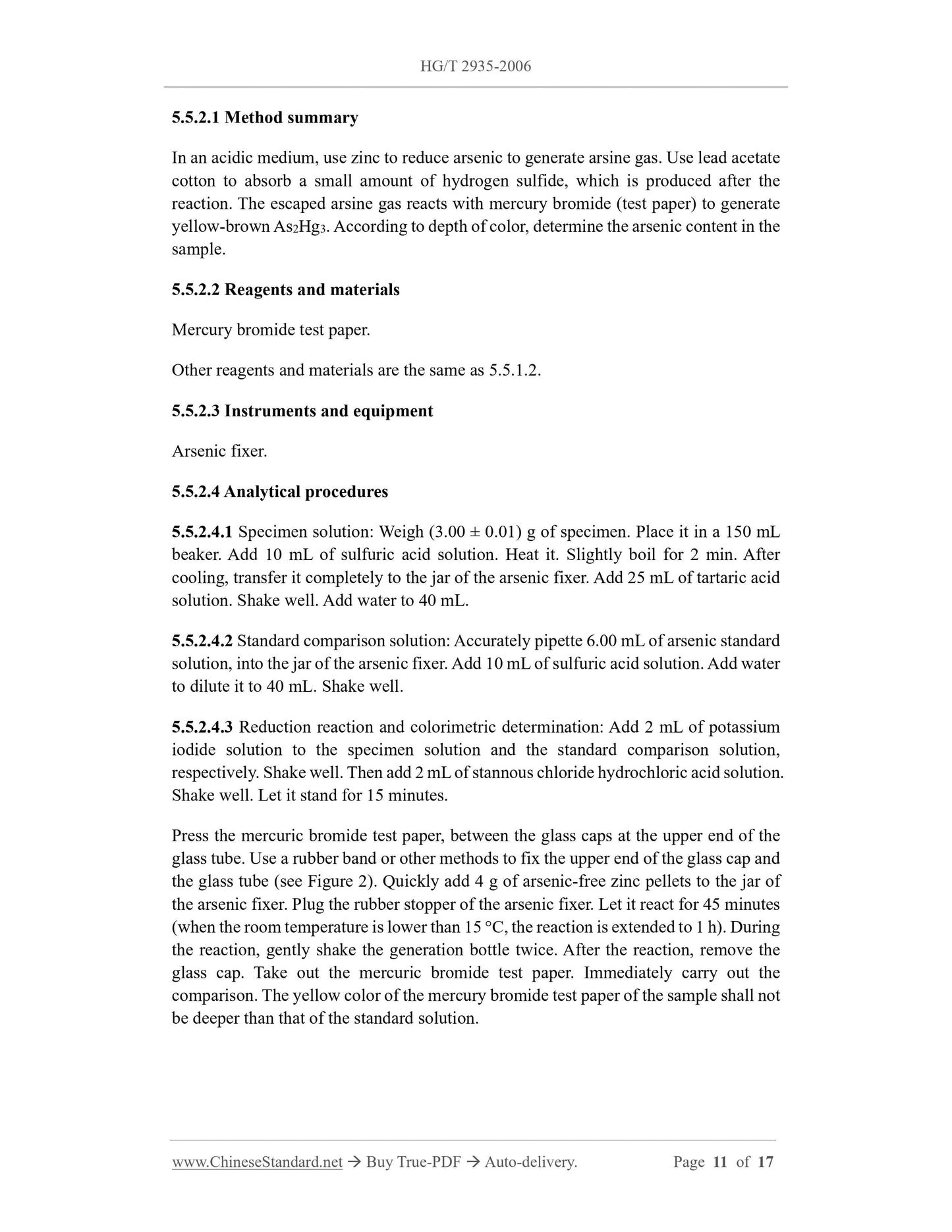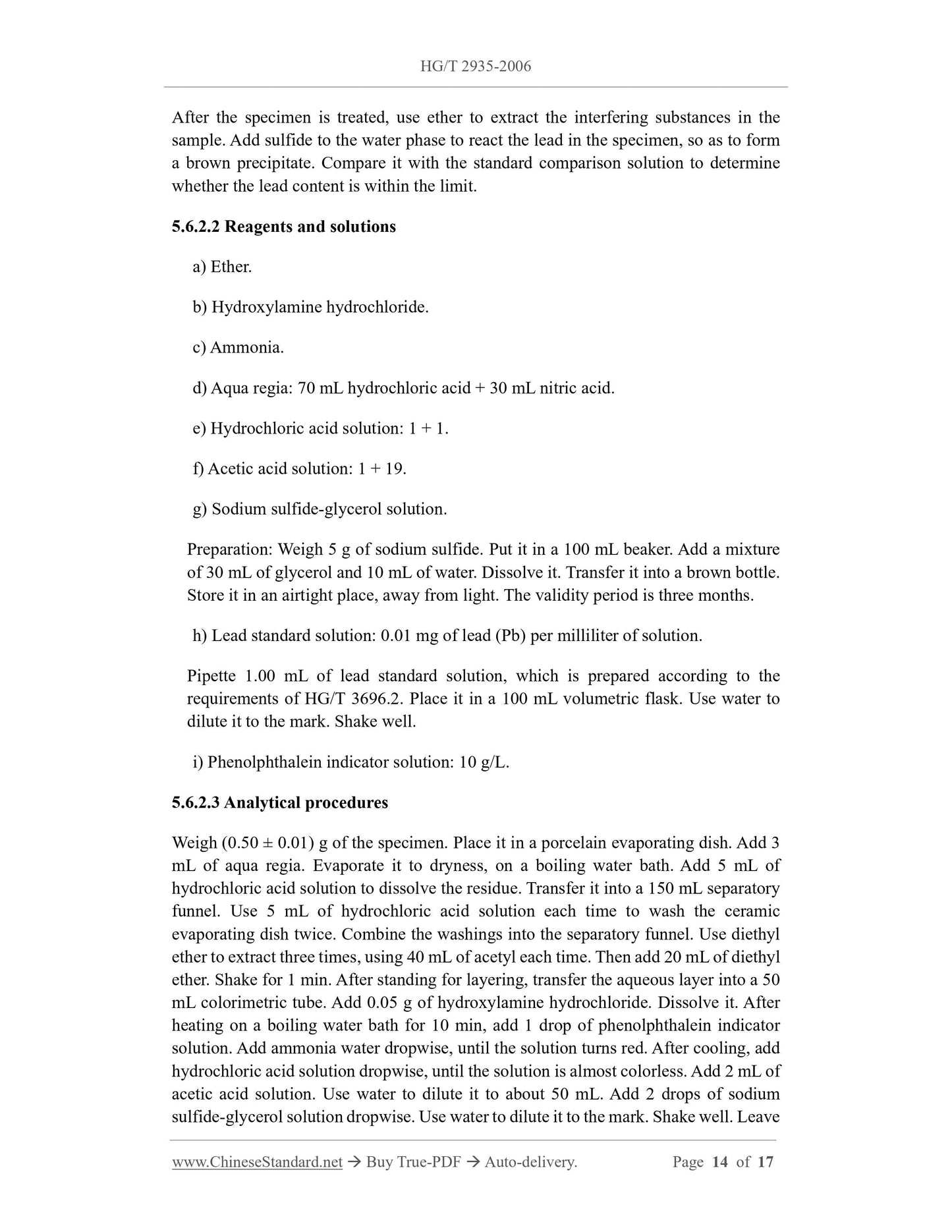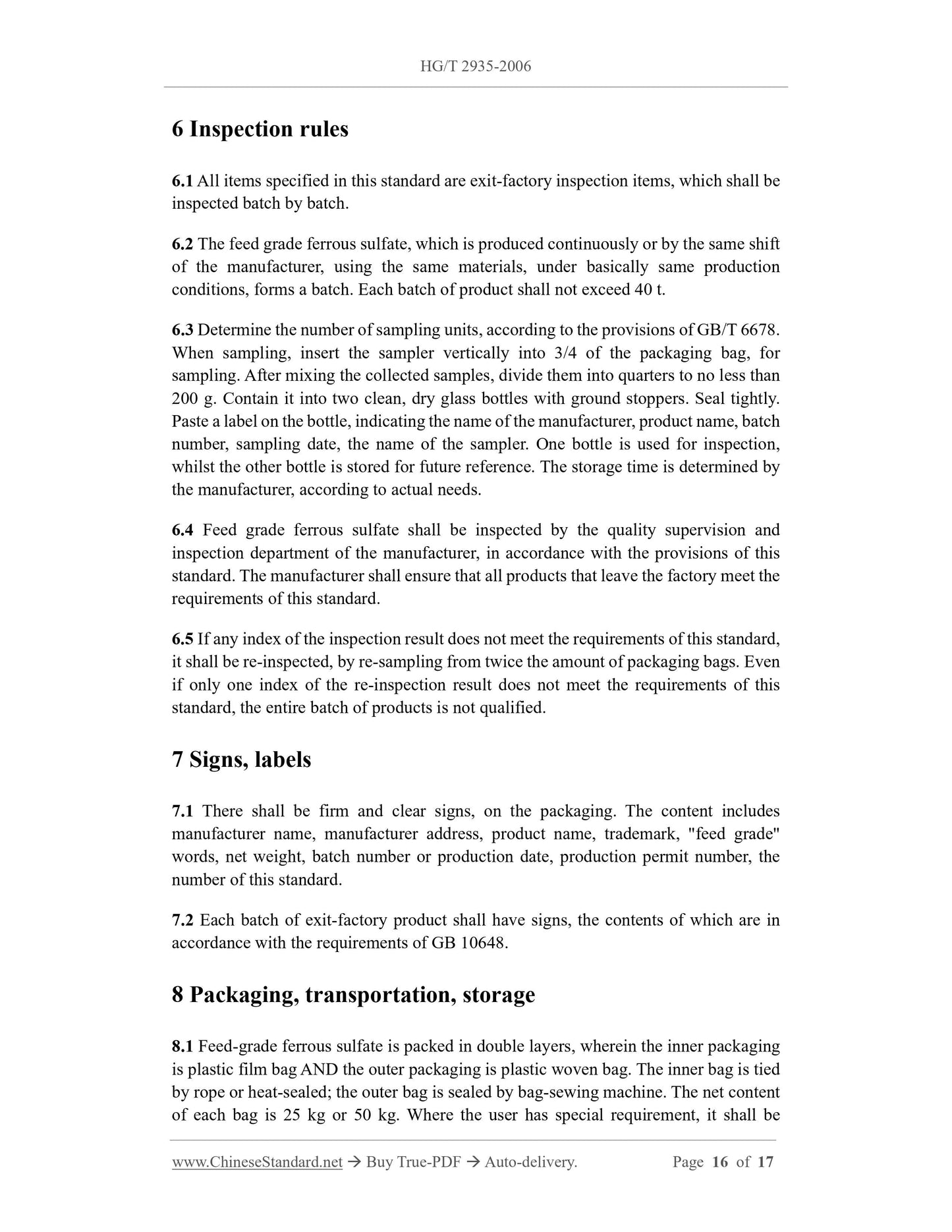1
/
of
9
www.ChineseStandard.us -- Field Test Asia Pte. Ltd.
HG/T 2935-2006 English PDF (HG/T2935-2006)
HG/T 2935-2006 English PDF (HG/T2935-2006)
Regular price
$140.00
Regular price
Sale price
$140.00
Unit price
/
per
Shipping calculated at checkout.
Couldn't load pickup availability
HG/T 2935-2006: Feed grade ferrous sulfate
Delivery: 9 seconds. Download (and Email) true-PDF + Invoice.Get Quotation: Click HG/T 2935-2006 (Self-service in 1-minute)
Newer / historical versions: HG/T 2935-2006
Preview True-PDF
Scope
This standard specifies the requirements, test methods, inspection rules, signs, labels,packaging, transportation, storage of feed grade ferrous sulfate.
This standard applies to monohydrate or heptahydrate feed grade ferrous sulfate. This
product is used as iron supplement, in feed processing.
Molecular formula: FeSO4 • nH2O, n = 1 or n = 7
Relative molecular mass: 169.92 (n = 1), 278.01 (n = 7) (according to the international
relative atomic mass in 2001)
Basic Data
| Standard ID | HG/T 2935-2006 (HG/T2935-2006) |
| Description (Translated English) | Feed grade ferrous sulfate |
| Sector / Industry | Chemical Industry Standard (Recommended) |
| Classification of Chinese Standard | B46 |
| Classification of International Standard | 65.120 |
| Word Count Estimation | 11,191 |
| Date of Issue | 2006-07-26 |
| Date of Implementation | 2007-03-01 |
| Older Standard (superseded by this standard) | HG 2935-2000 |
| Quoted Standard | GB/T 1250 |
| Regulation (derived from) | Development and Reform Commission Notice 2006/45 |
| Issuing agency(ies) | Ministry of Industry and Information Technology |
| Summary | This standard specifies the requirements for carbon molecular sieves, test methods, inspection rules and signs, packaging, transport and storage. This standard applies to the carbon molecular sieve strip products, mainly used for pressure swing adsorption air separation to nitrogen. |
Share
